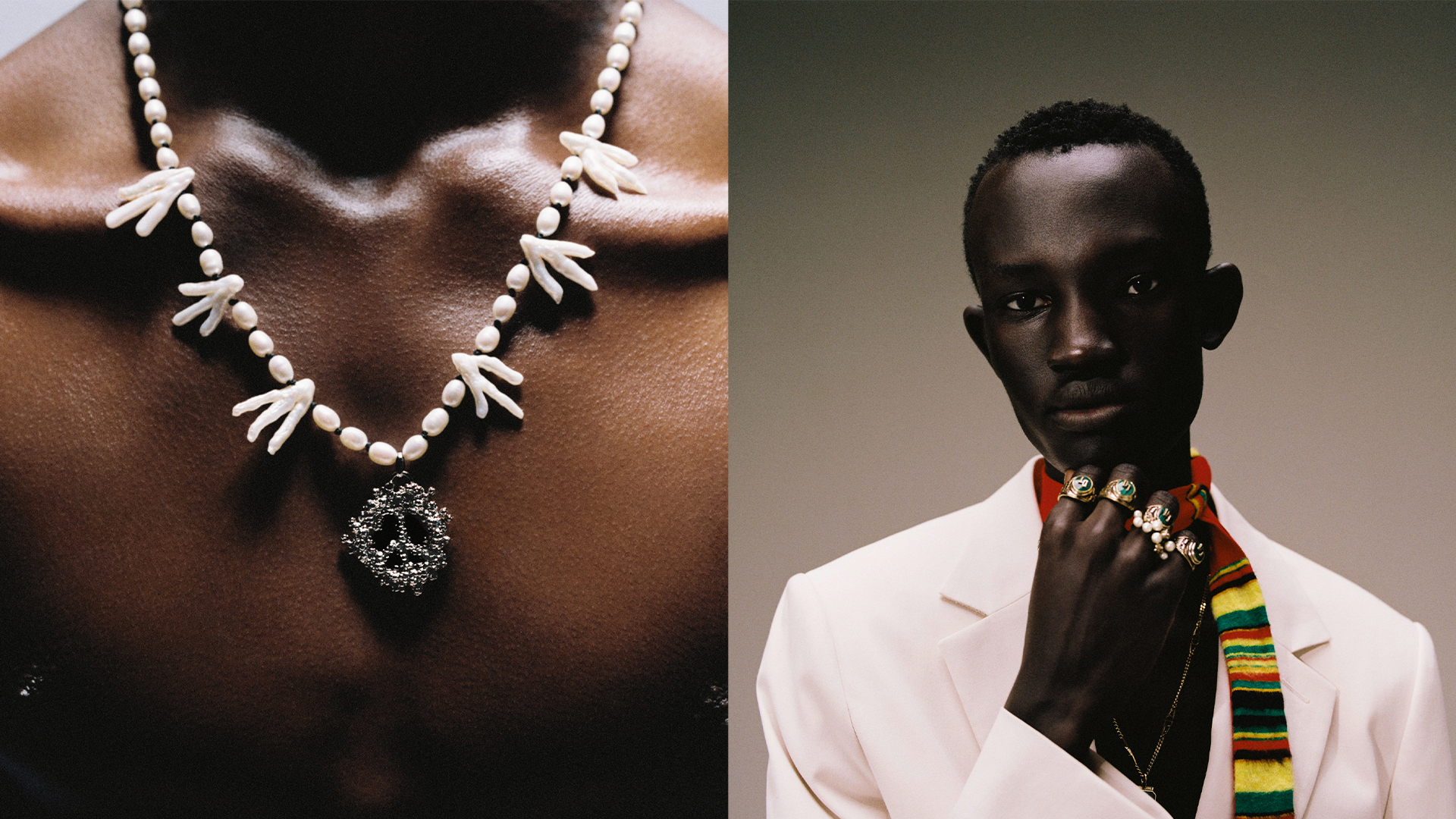This story originally appeared in i-D’s The Timeless Issue, no. 371, Spring 2023. Order your copy here.
Over the course of their respective careers, Kim Jones and Tremaine Emory have been significantly responsible for shaping the landscape of modern menswear: Kim through his tenures at the world’s most esteemed luxury houses; Tremaine through his work with legendary brands like Stüssy and Supreme, alongside his label, Denim Tears. But “Me and Kim, we’re not two people that came together because he was like, ‘Yo, Denim Tears, Dior, let’s put it together,” laughs Tremaine of their partnership, Dior Tears.
“It’s not like some industry plant, Illuminati thing. It was a long friendship, and two peers seeing each other, two creatives making stuff at their own pace and then supporting each other.” “We’ve been wanting to work together since 2005,” Kim reflects. “It was about working out what, when, and why.”
But even without that context – without knowing that the foundations of Dior Tears were rooted in a seventeen-year friendship, or understanding the myriad connections and love shared between the two men – what materialised in December certainly indicated a profound mutual respect. At Cairo’s Grand Egyptian Museum, they presented a collection which simultaneously drew upon their respective specificities: Kim’s remarkable abilities to modernise the historic codes of Christian Dior, and menswear more broadly, alongside Tremaine’s astonishing talent for telling stories through clothing.
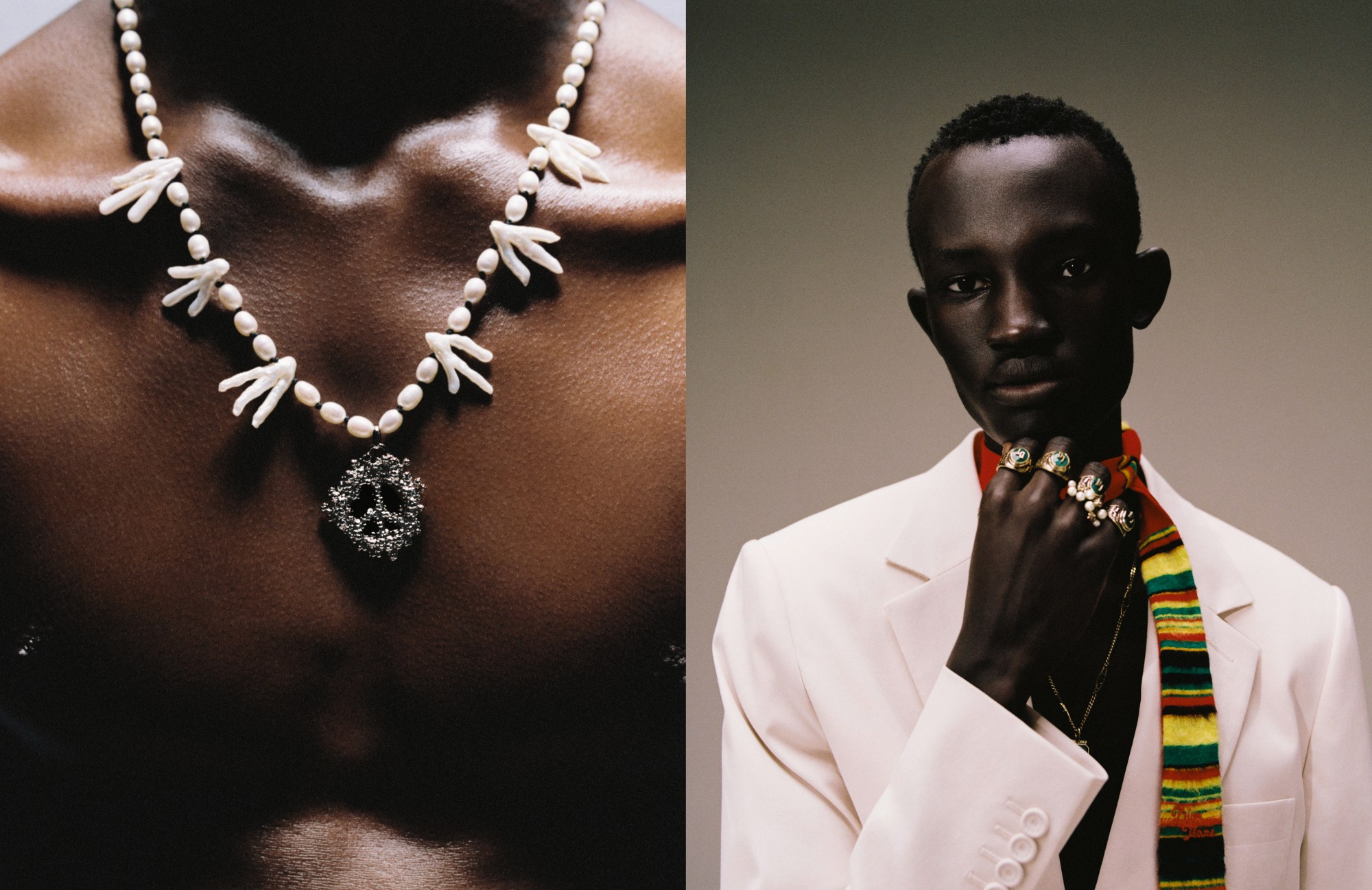
There was a harmony to the presentation which resonated with profound impact against the backdrop of CKTRL’s saxophone soundtrack, beneath a 3200-year-old statue of Ramesses The Great. Here, Kim and Tremaine explored the stories and wardrobes of mid-century Black creatives – from James Baldwin to Miles Davis — who left Jim Crow America and sought refuge in Europe — and then refracted them through the prism of Christian Dior. “What they found (in Europe) was not a perfect place devoid of racism, but a place that was different, where they truly got appreciated for what they did and for who they were,” Tremaine says. “I wanted to share that moment.”
Within the collection, the archetypal Americana of the 60s and 70s Ivy League academics met the insouciant cool of jazz musicians; the workwear worn on civil rights marches positioned in dialogue with classic French elegance. And, while the overarching narrative of Dior Tears revolved around this specific moment in time, its grammar – the wealth of symbolism that both Tremaine and Kim incorporate in their work – spoke to the Black experience more broadly. “Me and Kim are really similar in the sense of the depth we go into to make clothing – we’re not necessarily just looking at clothing to make clothing, if that makes sense,” Tremaine says. “My favourite thing about Kim’s work is these little nuances in his collections, which I’ve definitely studied and learned a lot from.”
Take, for example, the mohair armbands worn throughout the collection, styled atop flannel shirts, varsity jackets and tailoring alike. “Those armbands are what people wear across different cultures when someone passes; a remembrance. So, during the civil rights movement, you’d see someone wearing a suit jacket over some overalls with that armband, and they’d be marching for someone who might have been killed by police,” Tremaine says. “If you pay attention, you’ll see these little stories within the story, like Easter eggs. That’s one of them, the armband. It represents a remembrance of all those that have been lost in the struggle for freedom for Black people, and for people in general. And it’s a beautiful mohair, and also looks cool. That’s what I like to do: I like to make stuff that looks cool, and that has a story to tell.”

Elsewhere, the cotton wreath – a constant Denim Tears motif and, in Tremaine’s words, “my talisman, my box logo” – was imbued with meaning. “So this collection is based loosely around James Baldwin and Miles Davis and their travels to Europe; them and their friends, acolytes, peers, and lovers,” he explains. “Well, at some point, James Baldwin’s family was picking cotton as slaves, and after slavery, they were picking cotton as sharecroppers. Just like mine. Just like every African American. One thing we have in common is that if you’re African American and you don’t know where your family came from beyond a certain point, well they picked some cotton. That is the universal tie-in. Cotton’s the thing that built America, helped build capitalism in the world, the UK, and in Europe. So it’s always important for me to include that symbolism, whether it’s a big cotton wreath embellished on the varsity jackets, or just one singular bulb on a tuxedo lapel.”
It’s the details of these stories, which have historically been marginalised, that appeared centre stage here. But the macro impact of the collaboration, too, speaks volumes. “I look how I look and people are seeing me connected to Dior,” Tremaine shrugs. “I don’t need that validation – but let’s be real, representation does matter, especially to kids. So it’s dope that a kid of any colour is gonna read this article and hear about what those mohair armbands mean. Then hopefully one of those kids will go do the research and go read an article or read a book about that moment in time and how it relates to now and why they should be educated on it.”
“People always see fashion as quite a bitchy, closed-off, competitive world,” Kim continues. “But actually, if you create work with people who you know and you love, the results have meaning to them – not just in a superficial way. That’s one thing I’d say to people coming out of college, or to young designers: don’t look at what everyone else is doing, think about what you want to do. But if you like someone’s work, and you like them, then join forces and see what happens. Don’t be afraid to work with people – you learn things and do things that you wouldn’t think you could do.”
Subscribe to i-D NEWSFLASH. A weekly newsletter delivered to your inbox on Fridays.
Olivia Singer: Let’s start at the beginning: how did the two of you meet?
Kim Jones: I think it must have been about 2005. Tremaine was working for Marc Jacobs, and we started hanging out because we had a friend in common, Joey Lopez.
Tremaine Emory: Yes. Joey was a friend of mine, and he modelled in Kim’s first show in New York, in Chelsea.
Kim: Yeah, above the Tunnel Club.
Tremaine: I think it was the first non-Marc Jacobs fashion show I went to. So that’s how we met, and we’ve basically been hanging out ever since.
Kim: We always talked about doing something together, it was about working out what, when, and why. Then, when I thought about the idea of working with independent people on projects for Dior, it felt logical to do something with Tremaine. It was very organic. Tremaine came very clearly with what he wanted to do. I thought it was brilliant because it looked like a very modern Ralph Lauren, but with a very Dior twist.
Tremaine: Kim’s been working in fashion for much longer than me, but I’ve been working on projects for a decade now, and this was probably the most painless thing I’ve worked on. Kim’s so on point, and his team is too. Everyone’s super professional, but also they don’t take themselves too seriously…
Kim: Easygoing is what I’d say. It felt easy and natural. That’s when you know things are right, that’s when they work. It was completely authentic, which is what’s key for me – and it came through friendship.
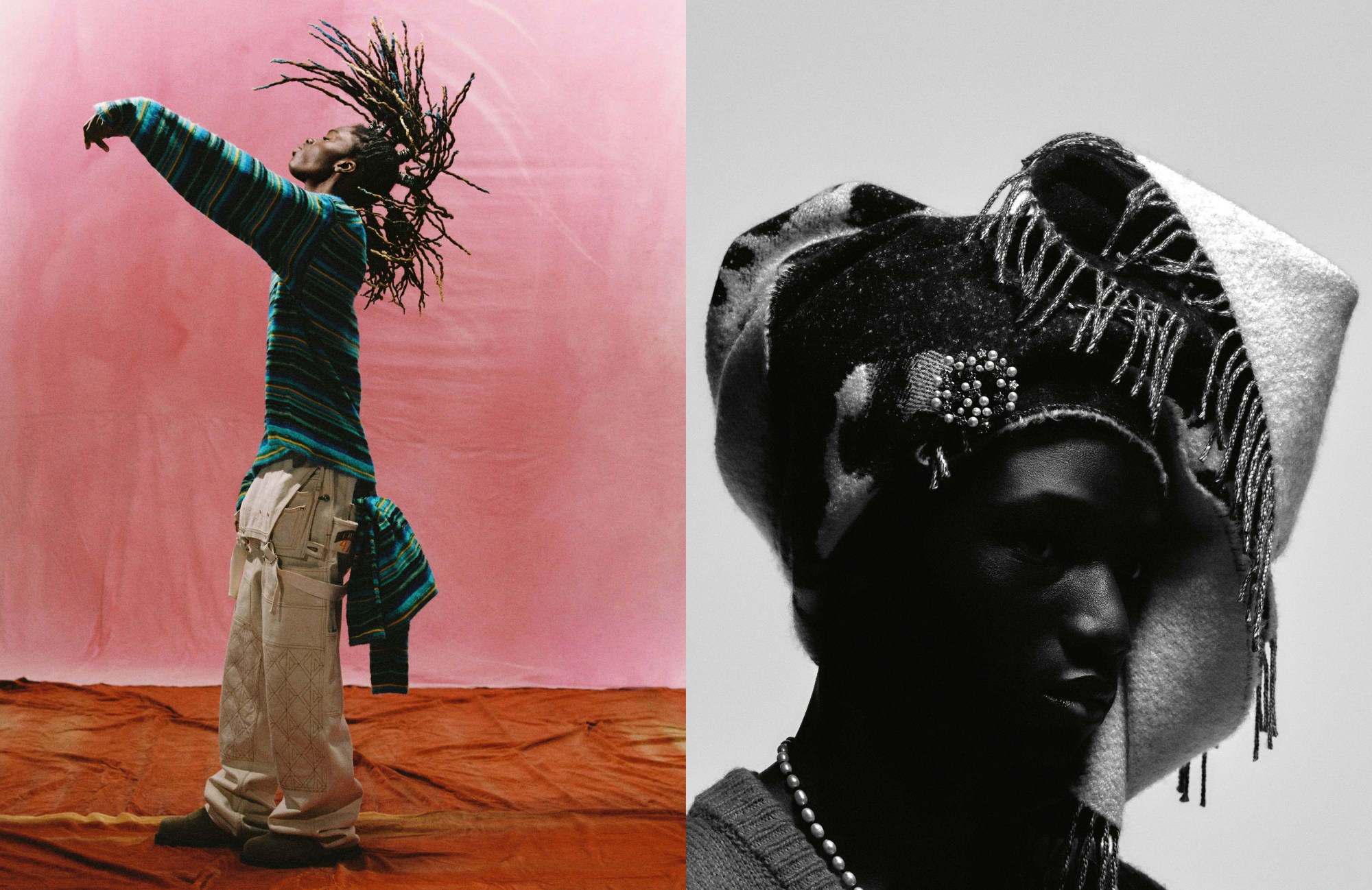
Olivia: What is it that interests you about what Tremaine does with Denim Tears?
Kim: It’s the point of view that Tremaine comes with: it’s such a taboo subject for so many people, but it’s such an important thing to talk about from an authentic perspective. Tremaine’s voice has become very loud in a very short time, and I think that really speaks to why Denim Tears is so important – it speaks to a lot of people, and I wanted to give him a way to discuss those stories through a larger platform. And also, I love Tremaine’s aesthetic. We have so many things in common that we love.
Tremaine: From the first Denim Tears collection, Kim’s always been sending me messages, whether it’s leaving a comment on Instagram, hitting me directly about the stuff he appreciated, or being like, “Oh, I love that T-shirt, can I buy it?” He’s always supported me. It felt like a watershed moment when he asked me to do the Dior collab. Kim is a beautiful person and I love him, so it was also an honour to work with him as a human being. I knew from the moment that I sent over my mood board and he sent his response to it – he started sending me images right away – that it was going to be a great collection. And I say that in the most humble way.
Kim: What was nice is that not only do young people find it really interesting, but when I showed it to all my bosses, they loved it and understood it too. They could see how amazing the things that Tremaine had worked on were.
Olivia: Tremaine, from my understanding of Denim Tears, the brand is so much about storytelling. Is that how you conceived it? After you’d worked on so many other projects, did you start out with a specific mission statement as it were?
Tremaine: I’m a cornucopia of things, and Denim Tears is a section of my being. I don’t spend my whole life thinking about what it is to be Black – I spent a lot of time thinking about it, but just as I think about what it is to be a human, what it is to be an artist, what is it to be from New York, what is it to be an Emory, the son of my mom and dad. There are a lot of things that make me up – but I noticed that once in a blue moon, Supreme would do a Malcolm X or a Martin Luther King T-shirt, which I always loved but they never really sold out. They still did them but I thought, what if you did a brand that expressed that sentiment in everything?
Also, I always felt like whenever anyone talked about the Black experience, it was always Malcolm X or Martin Luther King, or Harriet Tubman, who are these amazing people, but there are so many other stories. Some of them are happy, some of them are sad, some make you angry, some inspire you. And if you look at Denim Tears, it’s not all just about the transatlantic slave trade: it’s about Alvin Ailey, it’s about a guy keeping a tiger in his apartment in the projects in New York, it’s about the Gullah Geechee people, it’s about so many things.
The Dior project is about these young African American artists who were basically dealing with apartheid in America and Jim Crow, and so sought out Europe as a place of reprieve. What they found was not a perfect place – not a place devoid of racism – but a place that was different, where they were appreciated for what they did and for who they were. James Baldwin died in France, that’s where he chose to reside. Miles Davis and those guys, they cut their teeth touring in Europe. If you read their biographies, they speak about how they were appreciated differently in Europe to how they were in America. So it was this romantic notion of a young African American man or woman coming to Paris, running into James Baldwin and having a conversation at Café de Flore, or playing at a jazz club to a standing ovation and not having to walk out through the back of the club, but walking through the front door with everyone else. That was the mood board, and Kim loved it.

Kim: What I found interesting is that a lot of the research that Tremaine had done reflected some of my first memories of looking at American culture in the 60s, and the way that Black people were portrayed, through my uncle’s (Colin Jones) work as a photographer of the race riots. He had been a ballet dancer, but he’d been given a camera and started taking photos of the civil rights movement. A lot of the images Tremaine showed me reflected his work – and that was how I had first discovered what happened in America, through my family. It was very interesting to see something that had been shown at five years old come back in front of me as part of Tremaine’s research. Sometimes, when things come back around like that, in a full circle, it feels really right.
Tremaine: It’s quite serendipitous, which is another part of this project that I love. I think the clothing is great, but also I want people to see that if they just focus on friendship, so much can come out of that. I mean, when I met Kim, he was just a super nice guy, super interesting, and we had mutual friends. Then, when I moved to London – he was working for Dunhill at the time – he’d come into the Marc Jacobs store where I worked on Mount Street. He’d bring Honey Dijon, which is how I met her, and Judy Blame, who was one of the sweetest and most talented people I ever met in my life, and we’d hang out in the front of that store for hours and just talk.
Kim: If you create work with people who you know and love, the results have meaning to them. That’s one thing I’d say to people coming out of college, or to young designers. If you like someone’s work, and you like them, then join forces and see what happens. Don’t be afraid to work with people, you learn things and do things that you wouldn’t think you could do.
Tremaine: Kim showed me a world without trying to, just through being my friend. I’d go to his house and he’d show me a book of Vivienne Westwood’s archive, or the clothes he’d collected from the Sex shop – not because he was showing off, but because he knew I was interested in that stuff. Or he’d hear me talk about a record, and show me his collection. The first time I went to Japan, when he was busy as hell working at Louis, he gave me this huge list of places to go and to shop and to eat and shit like that. I mean, it’s actually not super special, it’s called being a friend.
That’s the most important thing for me about having this conversation – me and Kim, we’re not two people that came together because he was like, “Yo, Denim Tears, Dior, let’s put it together.” It was a long friendship, and two peers seeing each other, two creatives making stuff at their own pace and then supporting each other. Kim has been supporting me for a long time, and support isn’t just collaborating. Support can just be a conversation.
Kim: There’s another thing which we both have in common, which is Marc Jacobs being pivotal in both our careers. He was the person who hired me at Vuitton, and Tremaine, you were working for him when I met you. Marc’s generosity, and his way of working and getting people together to make amazing things was really a catalyst for the way that I look at doing things. Marc and Michael Kopelman, they’re the two people who really formed how I think about working: being collaborative, having your team be very involved, being open to other people’s ideas, bringing in new people, surprising people with things where they’ll love it or hate it. Just being open. Like Marc, Michael was extremely generous in how he’d introduce everyone in the office to whoever came through. Even when I was just doing work experience, I’d be introduced to people like Hiroshi (Fujiwara) or Jun (Takahashi) when they were in London. I was just absolutely in awe.
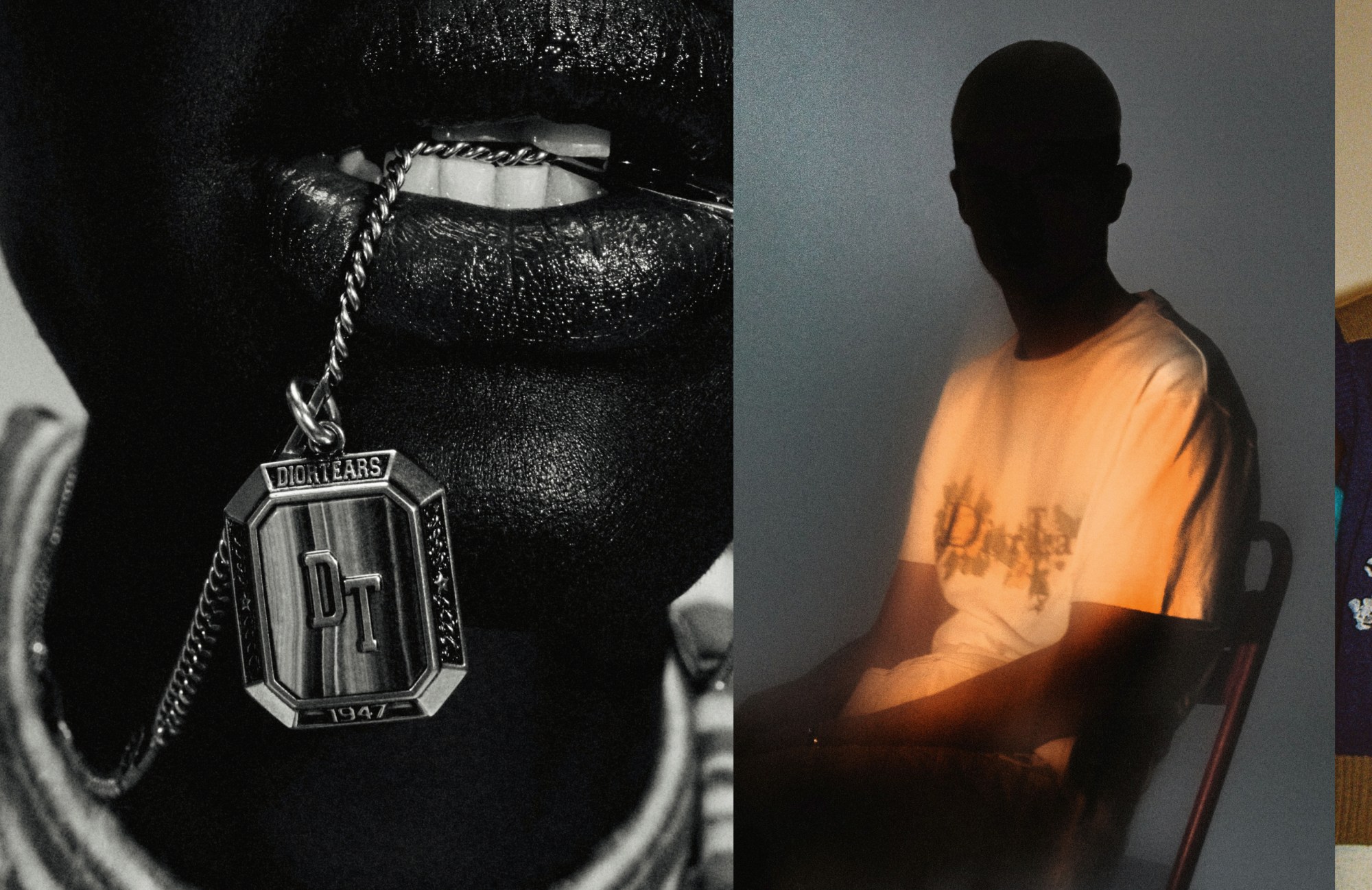
Olivia: Dan Sablon, who styled this story, also used to work for Marc!
Tremaine: Wow!
Olivia: We’ve done a full school of Marc moment.
Kim: It’d be quite fun to show Marc’s influence in fashion. A lot of people don’t realise how many people have worked with Marc, and how many of them are at the top of the industry thanks to him.
Tremaine: And now it’s generational: there are people who directly worked for Marc, but now there will be people who work for me and will benefit from us working together. Because I’d never be in the position I am without him. He moved me to London and that took my knowledge of music and style to the next level through all the people I met and became friends with working in retail. Kim used to work at Bond International, which was run by Michael Kopelman.
Kim: And The Hideout! I used to fold T-shirts for Fraser Cooke, and laugh at his dad jokes. I still laugh at his dad jokes now, and when we worked together at Nike. So, yeah, things come in circles. It’s very nice when you work in an industry and you see familiar and friendly people around and doing so well. That’s what I wish for the people that are coming up behind me. I want to see talented people who work hard and are driven and nice. There’s a lot of them in this industry: Martine Rose, Tremaine, Eli Russell Linnetz, Grace Wales Bonner, Craig Green… I’m excited to see what their next chapters are.
Olivia: Tremaine, this obviously broadens the audience of what you do in quite an extreme way – what do you make of that? What do you think the impact of that scale might be?
Tremaine: Well, say you go to Atlanta, the epicentre of hip-hop right now. They’re wearing Dior, they’re wearing Givenchy – like, my boys Bstroy just did that collab with Matt Williams. They’re wearing ERL. They’re wearing Denim Tears. But in July, when this comes out, they might just go into the Dior store in Lenox Mall without knowing about this collab, and see Dior Tears. They know about Kim, and they know about me, and it’s going to be amazing for that kid – whether they can afford it or not – to see us come together, after fifteen years of friendship, to put out this collection that is speaking to Black people about Black people. Regardless of whether they buy it or not, regardless of if they even want to. The message still gets across.
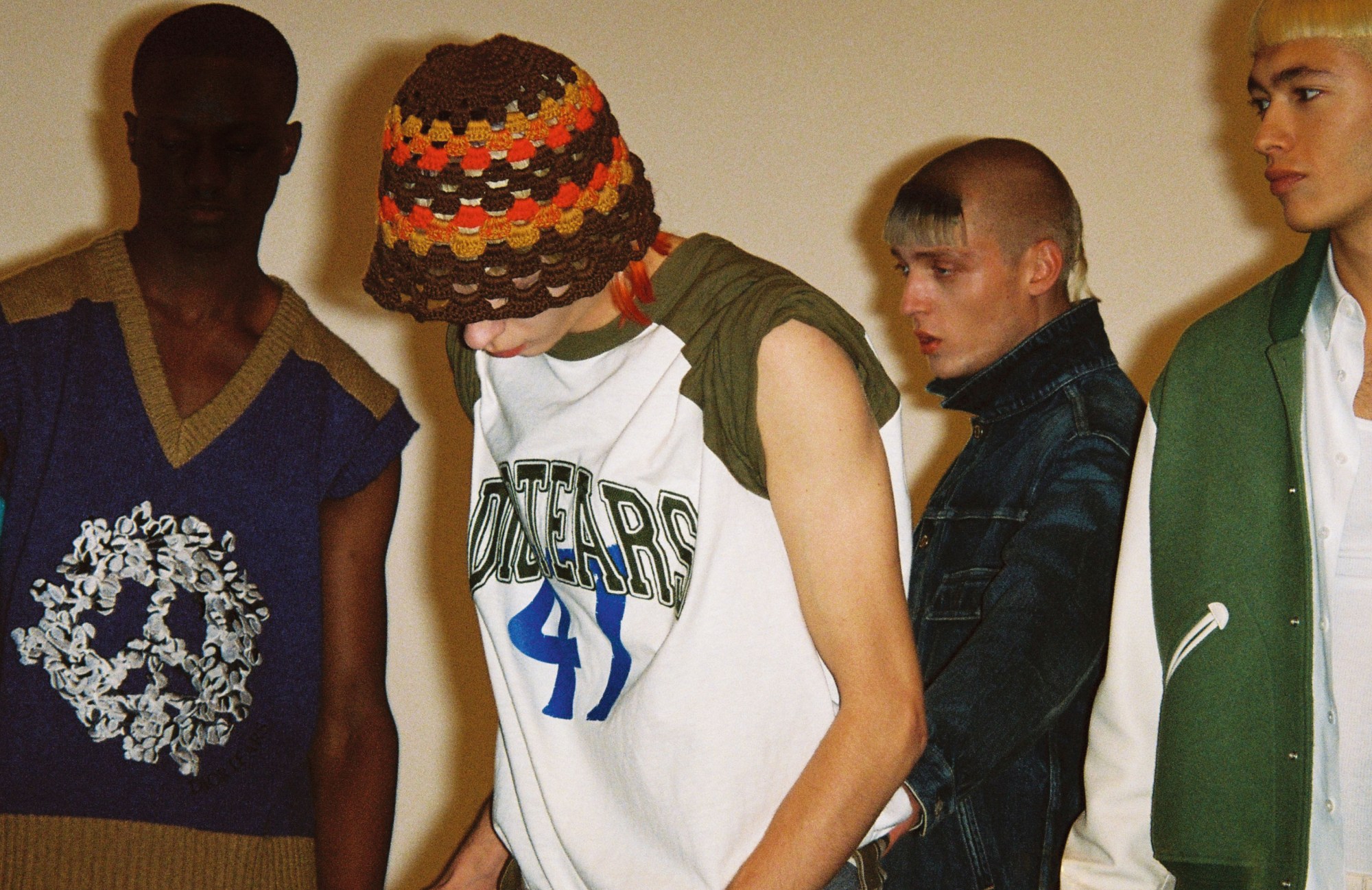
Credits
Photography Thibaut Grevet
Fashion Dan Sablon
Hair Karim Belghiran at Total World using Sachajuan
Make-up Maelys Jallali at Bryant Artists
Set design Felix Gesnouin at Total World
Lighting assistance Meshach Falconer and Dan Spigelman
Digital operator Antoine Bernard
Fashion assistance Ismène Duprat
Hair assistance Akiko Kawano
Make-up assistance Camille Lam
Set design assistance Gustave Birchler
Production DIVISION
Casting director Samuel Ellis Scheinman for DMCASTING
Casting assistance Alain Lucas and Brandon Contreras
Models Goy Manase at Girl Mgmt, Mahamadou Diaoune at M MGMT, Finn Morgan-Murrell at New Madison, Yoren Bamezon at Elite, Tom Rey at Success, Issa Naciri at Ford and Ilias Loopmans at Elite
All clothing and accessories from the DIOR TEARS collection by DIOR
